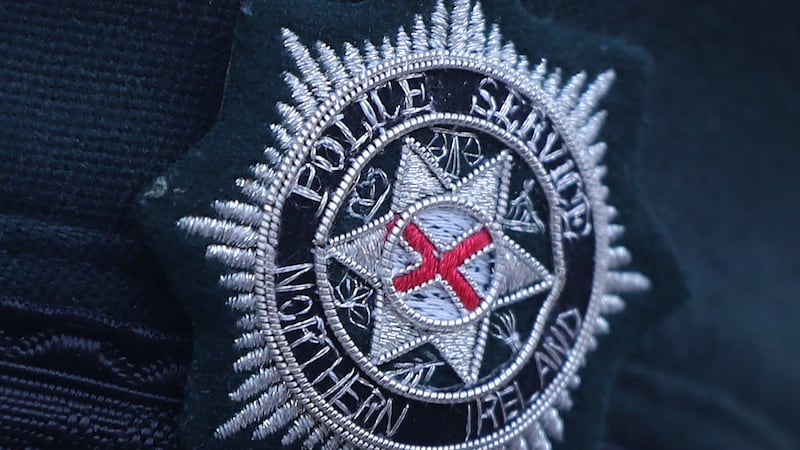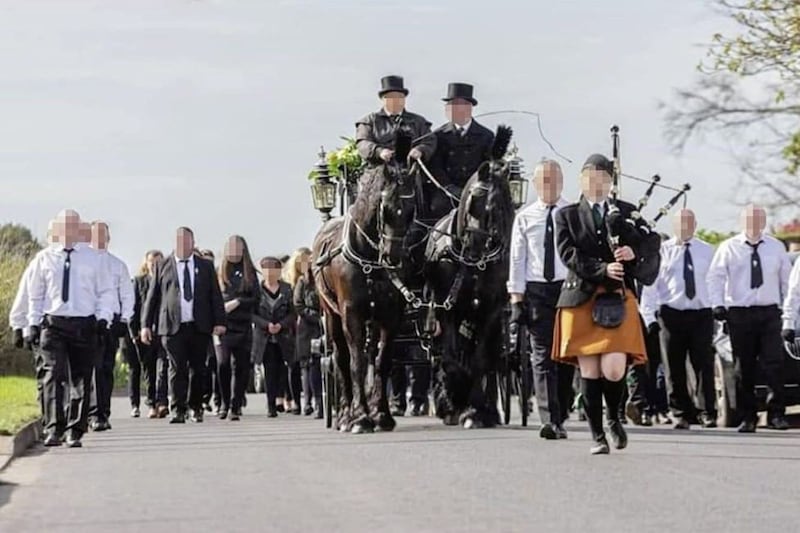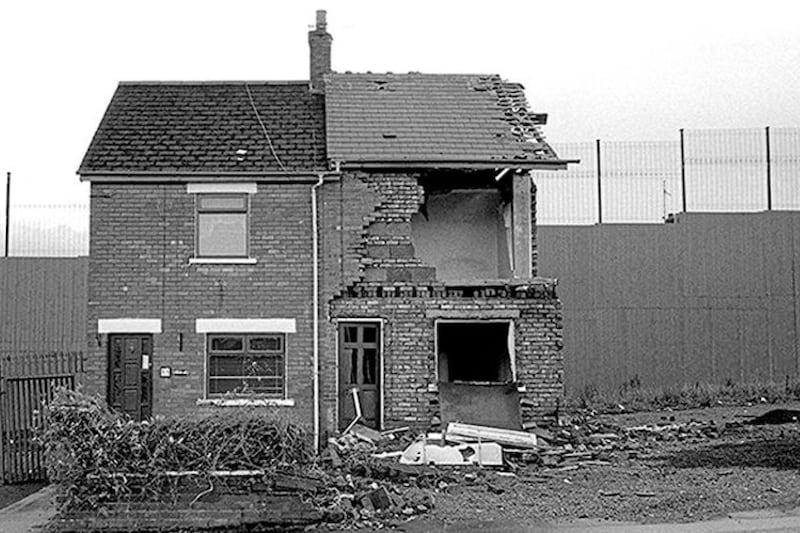THE evolution of Belfast's peace lines across a quarter-century of significant change for the city is explored in a new book featuring the work of celebrated photographer Frankie Quinn.
Belfast Cordon Sanitaire features striking images taken by the Short Strand snapper between 1994 and 2019 and detailing the infamous dividing walls that have separated the city's nationalist and unionist areas since 1969.
The book is released in a year that was once considered a target date for the removal of the barriers, but a decade on from the launch of that strategy, around 60 of the walls remain standing - blunt, towering metaphors for the divisions that still keep communities divided 30 years on from the signing of the Good Friday Agreement.
Accompanying Frankie Quinn's catalogue of photos in the new book - released by Swiss publisher Georg - is text from Geneva-based writer and philosophy professor Christophe Solioz, English author Vicky Cosstick, and Belfast urban designer Ciaran Mackel.


The photos detail the harsh reality of life in the shadow of the almost 20-miles of peace walls that still scar the city, across a time period that saw hopes rise and fall for their demolition.
Much of Quinn's work on the peace lines has previously been exhibited in Belfast, but the new book - which features the accompanying text in both English and French - collects the images together for the first time in a published tome.

"I had always wanted to see the photos collected in this way, and there are 170 images taken during periods between 1994 and 2019," the celebrated photographer told the Irish News.
"I go back every six or seven years to capture how the walls have changed. There have been some positive changes, such as the removal of the barriers at Serpentine Road in the north of the city as one notable example, but we are a long way off the goal set by Martin McGuinness and Peter Robinson back in 2013."

Ten years ago, the then-first and deputy first ministers unveiled ambitious shared future plans that, among other goals, aimed to see all peace walls dismantled by 2023.
The Together: Building a United Community strategy failed to meet its target, and despite small steps such as the opening of gates and the visual softening of some of the harsher-looking barriers, hopes have long faded for their removal.
Read More :
- Hopes for removal of Belfast peace wall following bid for funding
- What is a peace wall? An explainer
- Hugh Russell: Boxer turned news photographer ‘captured window' of Northern Ireland's history
In fact, Stormont's Department of Justice last year issued a tender worth around £450,000 for the upkeep of peace lines for the next few years.
Despite their dismal function, the walls are a tourist attraction for visitors to Belfast keen to see a legacy of the Troubles.

"In some cases, the peace lines provide a canvas for people to express themselves," Quinn said.
"The wall at Cupar Way has countless signatures from visitors from all over the world who come to see it. They are a big draw for tourism. Perhaps in a future where they are no longer necessary, parts could remain for visitors, similar to the Berlin Wall.

"The late, great Belfast writer Ciaran Carson once wrote that the main interface between the Falls and the Shankill was where the areas 'joined together as unhappy Siamese twins, one sporadically and mechanically beating the other around the head'.
"I feel we are a long way off having them taken down. In many cases it just isn't practical, such as where I'm from in the Short Strand. But there are others where I feel it is long past time for their removal, such as the absurd barrier still dividing Alexandra Park in north Belfast.
"The symbolism of removing a peace line in a public park would be a significant step forward, I feel."
Belfast Cordon Sanitaire was launched this week at the Artcetera Studio in Belfast's Rosemary Street, and Frankie Quinn will be signing copies of the book at an event in the venue this Saturday, October 28, from 1pm.








